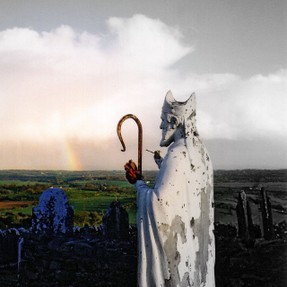 The strategy was all there. St Patrick headed first for the nobility, and he had an explanation and/or secret about the existing Irish pantheon and nature spirits. All good.
The strategy was all there. St Patrick headed first for the nobility, and he had an explanation and/or secret about the existing Irish pantheon and nature spirits. All good.
But conversion is a two way street. St Patrick could evangelize all he liked, but it wouldn't get him very far, if the Irish laughed in his face.
Imagine today me turning up and declaring that YOUR holy site now belongs to my deity. What would you do?
Nothing much changes over the years. The 5th century Irish were just like you and me. The same mumbles, grumbles, protests and downright riots would have ensued (and probably did), but for one major factor. Patrick himself.
For a start, he was relentless. Nothing changed overnight. He devoted the rest of his life to being the apostle of the Irish. He found converts one by one, home by home, settlement by settlement, stronghold by stronghold, until whole areas had people baptized. Then he instructed those who would stay behind to maintain the faith and find more converts in that region.
But most of all, it was his personality and his way of connecting with all whom he met. He could talk to the nobility on their level, because he was one of them. He could talk with the slaves on their level, because he had been one of them too.
He pointed out what was in the interests of each. Why should a king convert? Because the alternative was following the Druids. The druidic faith held a monarch synonymous with their land. Too many failed crops could technically lead to a blood sacrifice. The Christian faith held God responsible for the land, with a monarch as his anointed, chosen leader. It granted much more power without accountability.
Why should a slave convert? Because God had reached down for Patrick when he was a slave. He had helped Patrick escape and now look at him. Moreover, Patrick was teaching an anti-slavery message alongside the Gospel. Those clan leaders who converted freed their slaves.
Patrick made it in the interests of whomever he spoke with to make the switch. He acted as living proof that Christianity was the way forward. He did it in such a human way too. He admitted his own fears, his own doubts, his own sins. He made them love him. He made them feel like they'd been let in on a big, almighty secret. He made them feel like he was a friend, one of them, giving the best advice possible.
People converted because they wanted to. It's the only way that anyone does anything on a deep soul level; and Christianity was presented as just that.
Still, not everyone was a fan and not everyone took Patrick's Mission as a wonderful and benevolent thing. Part four of his story will linger upon that.



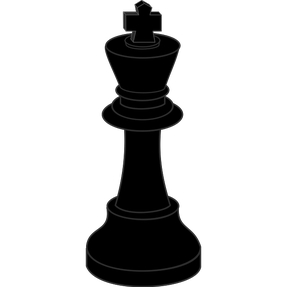 From the monks and all his fellow Christian brethren back in France, Patrick knew what to do. All missionaries of the time did the same. It was tried, tested and known to work.
From the monks and all his fellow Christian brethren back in France, Patrick knew what to do. All missionaries of the time did the same. It was tried, tested and known to work.


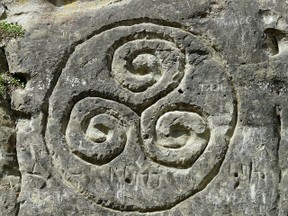 To understood how St Patrick converted the Irish to Christianity, you first must understand the times in which he worked. More to the point, how spirituality already existed in Ireland.
To understood how St Patrick converted the Irish to Christianity, you first must understand the times in which he worked. More to the point, how spirituality already existed in Ireland.


 The best way to convert a people to your own point of view is never to dismiss their own. It's to reinterpret it. The facts remain the same, but the conclusions shift into something entirely different.
The best way to convert a people to your own point of view is never to dismiss their own. It's to reinterpret it. The facts remain the same, but the conclusions shift into something entirely different.


 The strategy was all there. St Patrick headed first for the nobility, and he had an explanation and/or secret about the existing Irish pantheon and nature spirits. All good.
The strategy was all there. St Patrick headed first for the nobility, and he had an explanation and/or secret about the existing Irish pantheon and nature spirits. All good.





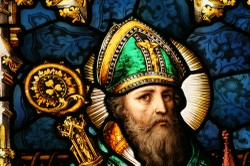

 St Tydecho's Churches in West Waleson 09/03/2014
St Tydecho's Churches in West Waleson 09/03/2014
 Goodies for an Outlander Premiere Partyon 03/06/2015
Goodies for an Outlander Premiere Partyon 03/06/2015
 Holocaust Memorial Day Interview with Rainer Höss, Grandson of Rudolf Architect of Auschwitzon 01/24/2015
Holocaust Memorial Day Interview with Rainer Höss, Grandson of Rudolf Architect of Auschwitzon 01/24/2015
 Romantic Valentine Gifts for an Outlander Fanon 01/16/2015
Romantic Valentine Gifts for an Outlander Fanon 01/16/2015

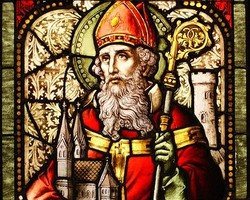
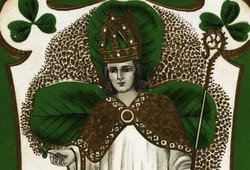
Comments
Then my work here is done.
looking forward to the next one :)
Glad to have entertained you. :)
I love these pages, Jo. Off to read the fourth installment now. :)
Yay! Thanks for reading it. :)
Some absolutely great points. Loved it!
Thank you very much. He's an interesting man to write about!
All of these Wizzes have been really interesting, Jo. You have a great knack for bringing it all to life!
It became a blueprint for future missionaries too. Clever man, St Patrick!
Fascinating. Interesting to read his tactics for conversion.